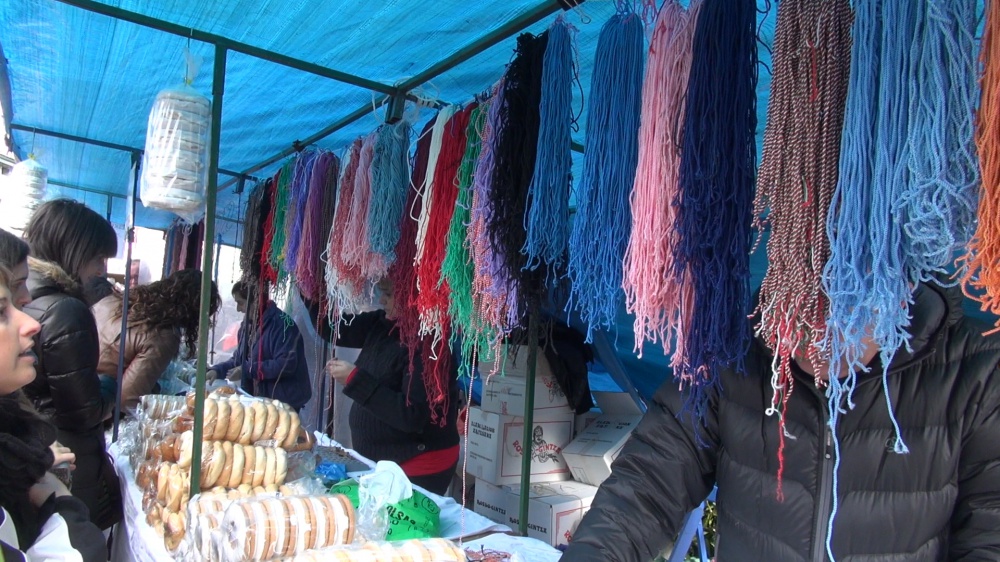Tomorrow, February 3, much of the Catholic world celebrates the fiestas of San Blas, or in English Saint Blaise. This festival is popular in the Basque Country, celebrated in many of the villages and cities of the country. It is noted for the unique pastries that are part of the celebration.

- San Blas, born in Armenia some time in the III century, is the patron saint of throat diseases. The story goes that, as he was being led to prison, where he was ultimately tortured and beheaded for not renouncing his faith, a woman came to him with her child, who was choking on a fish bone. The child was immediately cured, and hence San Blas became the patron of throat diseases.
- Festivals surrounded San Blas abound in the Basque Country. On the day of his festival, believers take cords to church to be blessed. In Bilbao alone, 50 kilometers of cord are sold. Originally, the cords were wrapped around a piece of bread, and the blessing of the bread was also transferred to the cord itself. The belief is that, if one wears the cord around their neck for 9 days and then burns it, they will be protected from all evil. The bread itself, being also blessed, is protected from mold, and pieces are given to animals to protect them as well.
- There are hermitages dedicated to San Blas scattered all over the Basque Country, including Gipuzkoa (Antzuola, Aretxabaleta, Bergara, Elgeta, Getaria, Mutriku, Tolosa, and Zerain), Bizkaia (Urregi), Araba (Zalduendo), and Nafarroa (Riezu, Ollogoyen, Olite, Muruzabal de Ilzarbe, Los Arcos, Lodosa, Larrasoaña, Larraga, Aradiel de Corella, Ujue and Milagro). The oldest dates to the 16th century. The one in Milagro is particularly noteworthy, as an arm of San Blas is kept as a relic. However, as noted by Collin de Plancy in 1882, “With a little research, we would find Saint Blaise armed with a hundred arms, like the giant of the fable. The fingers, teeth, feet of this voluminous saint are too scattered for us to undertake to bring them together.”
- Another distinguishing aspect of the festivals of San Blas is the food. When wheat bread became part of the standard Basque diet, in the 19th century, they began to bless these breads on the day of San Blas. They would enrich the bread with butter, honey, eggs, or sodas — in the Goiherri some added crushed black pepper to the bread, called piper-opillas (I couldn’t find a recipe… anyone have one?) — or the now-typical sanblases: cakes bathed with whipped egg whites and sugar, and then adorned with the name of the saint written with chocolate.
Primary sources: Wikipedia, Aguirre Sorondo, Antxon. San Blas. Enciclopedia Auñamendi, 2020. Available at: http://aunamendi.eusko-ikaskuntza.eus/es/san-blas/ar-151530/


Bilbao, El Arenal, Fiesta de San Blas (celebrated in the church of Saint Nicholas) candy, good for the throat, the colorful cords that we spent some time choosing the medal… Thank you for the sweet memory.